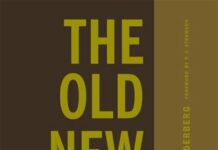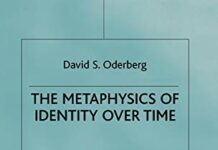
Ebook Info
- Published: 2007
- Number of pages: 329 pages
- Format: PDF
- File Size: 3.07 MB
- Authors: David S. Oderberg
Description
Real Essentialism presents a comprehensive defence of neo-Aristotelian essentialism. Do objects have essences? Must they be the kinds of things they are in spite of the changes they undergo? Can we know what things are really like – can we define and classify reality? Many if not most philosophers doubt this, influenced by centuries of empiricism, and by the anti-essentialism of Wittgenstein, Quine, Popper, and other thinkers. Real Essentialism reinvigorates the tradition of realist, essentialist metaphysics, defending the reality and knowability of essence, the possibility of objective, immutable definition, and its relevance to contemporary scientific and metaphysical issues such as whether essence transcends physics and chemistry, the essence of life, the nature of biological species, and the nature of the person.
User’s Reviews
Reviews from Amazon users which were colected at the time this book was published on the website:
⭐This man is way too brilliant, displaying encyclopedic knowledge of the history of philosophy from ancient sources to modern primary and secondary literature, along with an astounding grasp of biological science in his discussion of form and species. I was not at all conversant with the analytic philosophy, having studied only ancient and medieval, with particular attention to the scholastic metaphysics of St. Thomas Aquinas. Very deep reading, requiring concentrated attention, but well worth the effort. Really deserves a second reading if time.
⭐This book is for philosophers and requires very attentive concentrated reading and re-reading. Do not buy this book unless you have some background in Aristotle, it is NOT written for the general audience. I already knew a fair amount of Aristotelianism, having read all of Edward Feser’s books and this book was difficult for me in sections. Feser is a much better writer for the common man, and takes the ‘philosophical-ese’ out of philosophy. At bottom, these topics are not that difficult to understand, unless they are written for other philosophers, as this book is – one always senses a bit of showmanship to impress other colleagues. For a general audience readership I would only give it 3 stars.
⭐This is not a book for the faint of heart. It is a book by a professional analytic philosopher defending an Aristotelian-Thomostic (AT) understanding of real essentialism, and it is written for those who are already familiar with much of the debate surrounding real essentialim in the sense that the author interacts with many other authors who argue either against real essentialism or hold to a view of essentialism (e.g. a “bundle theory”) that is incompatible with the AT viewpoint of the author. Hence, this is a scholarly work as opposed to a popular level work like many of the books by fellow AT metaphysicist Edward Feser. I am not by any stretch of the imagination a professional philosopher, and so this book was very challenging for me. There are many parts that I will need to go back and reread.That being said, someone like me who is only a lowly amateur scholastic was able to get much out of this book. Oderberg defines and defends the AT view of real essentialism; that is, he defends the proposition that things have real essences which are knowable (though not exhaustively) by us. As mentioned above, he critiques other forms of essentialism or those ideas associated with essentialism, such as “other worlds” and the view that the essence of something is simply a collection of properties (the so-called bundle theory). Chapter 3 is especially helpful, as in this chapter Oderberg gives the most robust positive defense of real essentialism, arguing why such a philosophy is necessary as well as how we can know essences. Other chapters are devoted to interacting with much of modern science and modern objections to essentialism. For example, Oderberg spends an entire chapter discussing whether or not evolution and modern biology undermine essentialism (hint: they don’t). He takes the time to look at common views of the phylogenetic tree and show the philosophical shortcomings of the modern (reductionist) way of determining whether two animals are of the same species. Please note this is not a criticism of biology or evolution, but a criticism of the philosophy of determining when we ought to consider two animals of the same species.Oderberg finishes the book by defending “hylomorphic dualistic” view of the human person. In other words, he discusses the implications of real essentialism to the human person.This is an essential book for those wishing to defend and hold to AT metaphysics. What is especially helpful about this book is the fact that it is true to the metaphysics of Aquinas, yet it uses those meatphysical principles to interact with modern objections based on new discoveries like human evolution. This is not the book to begin studying AT metaphysics, as texts by Feser would be better suited for the beginner. But with a decent knowledge under your belt of AT metaphysics, this book is a must read.
⭐An in-depth treatment of essence is not very common, so the book — by a professor at the University of Reading in England — was interesting. I agreed with part, though not near all.Chapter 1 – Contemporary essentialism and real essentialism.Since about 1970 essentialism has received more attention from philosophers than the previous few centuries. However, the modern versions significantly differ from the real essentialism endorsed by Oderberg and deriving from Aristotle and Aquinas. In his view the modern version is too much concerned with reductionism. Real essentialism is concerned not just with internal structure and an emphasis on quantity, but the unity of objects. It holds that qualitative characteristics are equally a part of ontology. The broader perspective is needed to address the essence of a statue or immaterial things.Chapter 2 – Some varieties of anti-essentialism.Oderberg addresses the views of empiricists (mainly Locke), Quine, Popper, and Wittgenstein. His presentation of Locke is one-sided. While Locke criticized real essentialism, at least for substances (Aristotle’s meaning), he gave an account of nominal essence that Oderberg omitted entirely.Chapter 3 – The reliability and knowability of essence.Real essentialism is based on two aspects of unity. First, there is the unity of multiple entities that fall under the same kinds. Second, there is the unity of a concrete particular, especially a substance such as a man or gold. How can we account for a unified, characteristic repertoire of behavior, operations, and functions of a single integral entity? How do we account for something persisting that undergoes change?Chapter 4 – The structure of essence.He introduces hylemorphism (it is spelled with “e” instead of “o” in England?). Every finite material body is a compound of act and potency. Potency may be active or passive. He discusses substantial form. Actuality is to be understood as form, and potentiality as matter. Per Oderberg prime matter underlies all kinds of matter and has no form or essence. This goes beyond what Aristotle said, but maybe not beyond Aquinas. It is also rather strange, as he also says prime matter is never without some form and completely undifferentiated. The latter conflicts with the history of discovery in physics and chemistry, unless it is held that prime matter is imaginary but not real. He defends substance against trope theory. Substances are a compound of prime matter and substantial form.Chapter 5 – Essence and identity.This chapter is more about genus-species and classification. There is also a section on individuation. Every substance is a compound of matter and form. The dominant hylemorphic view is that form is the universal part, giving to each thing that shares it, its particular essence. Matter must be the principle of diversity. However, this seems to go against the claim that prime matter is not the principle of individuation. He spends pages trying to address the apparent inconsistency, in my view not very successfully. He also addresses identity over time.Chapter 6 – Essence and existence.This is about the debate of whether the essence/existence distinction is real or conception, powers, and laws of nature.Chapter 7 – Aspects of essence.He moves on to essences of other than substances, especially properties. We gain knowledge of essences via properties. He addresses jade and topaz, which are real examples somewhat like Hilary Putnam’s famous water (or Twin Earth) example.Chapter 8 – Life.What is the essence of life? In essentialist terms, metabolism, growth, and reproduction stand out. He rejects vitalism and abiogenesis. Life forms are immaterial, like all forms and universals.Chapter 9 – Species, biological and metaphysical.This is about categorizing species in a hierarchy. The essentialist hierarchy, based on similar properties, i.e. morpohology, has been challenged by categorizing by evolutionary descent, especially cladistics. He thinks essence is determined by form, not a cluster of properties. A prominent argument against essentialism in biology is its vagueness, usually based on intermediate and transitional species. He argues that holding that an essence could be vague is tantamount to denying essence altogether. That is an astonishing charge. He writes, “in some cases, belief in metaphysical vagueness is no more than a projection onto the world of our incomplete grasp of essence”. So why doesn’t he charge classifying by metaphysical essence with vagueness, too?Chapter 10 – The person.What is the essence of personhood? He posits hylemorphic dualism. Divergences from Aristotle’s ideas and toward typical religious ideas are clear. A dog’s soul is wholly material but a human soul is wholly immaterial. A human soul is immortal. Consciousness is addressed.
⭐If you’re interested in metaphysics, this is the book for you. It is down to earth but is not an easy read. You will need to remove clutter and assumptions which youve
⭐An absolute must-have for anyone interested in neo-Aristotelian metaphysics, or metaphysics more broadly. Covers essentialism from many angles, including biological. It is not written in a layman-friendly way, however, so don’t expect Ed Feser.
Keywords
Free Download Real Essentialism (Routledge Studies in Contemporary Philosophy Book 11) 1st Edition in PDF format
Real Essentialism (Routledge Studies in Contemporary Philosophy Book 11) 1st Edition PDF Free Download
Download Real Essentialism (Routledge Studies in Contemporary Philosophy Book 11) 1st Edition 2007 PDF Free
Real Essentialism (Routledge Studies in Contemporary Philosophy Book 11) 1st Edition 2007 PDF Free Download
Download Real Essentialism (Routledge Studies in Contemporary Philosophy Book 11) 1st Edition PDF
Free Download Ebook Real Essentialism (Routledge Studies in Contemporary Philosophy Book 11) 1st Edition

